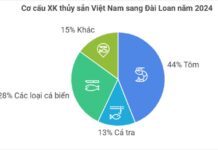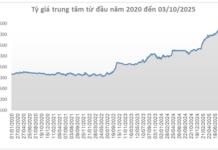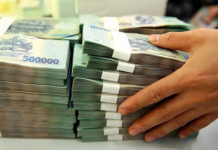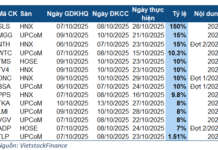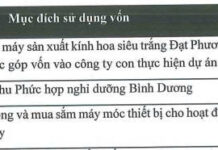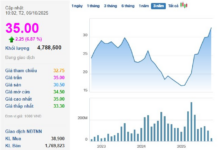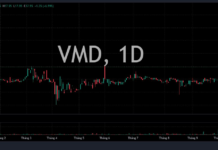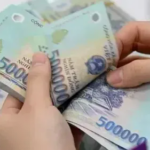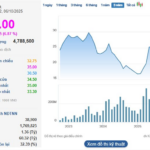Ho Chi Minh City Tops in Budget Revenue
According to a report by the Statistics Bureau of the Ministry of Finance, an estimated VND 1.58 quadrillion in state budget revenue was collected in the first seven months of the year, equivalent to 80.2% of the annual plan and a 27.8% increase compared to the same period last year.
Domestic revenue reached approximately VND 1.37 quadrillion, accounting for 81.8% of the plan and a 31.8% surge. Crude oil revenue was estimated at VND 28.7 trillion, meeting 53.9% of the plan and a 16.5% decrease; while trade balance revenue from import-export activities reached VND 182.7 trillion, equivalent to 77.7% of the plan and an 11.6% increase compared to the previous year.
Notably, July marked the first month of implementing the local government model with two administrative levels in 34 provinces and cities. The data revealed significant budget revenue achievements in several localities, especially the two economic hubs of Hanoi and Ho Chi Minh City, contributing to the country’s overall revenue. Some localities even exceeded their annual plans.
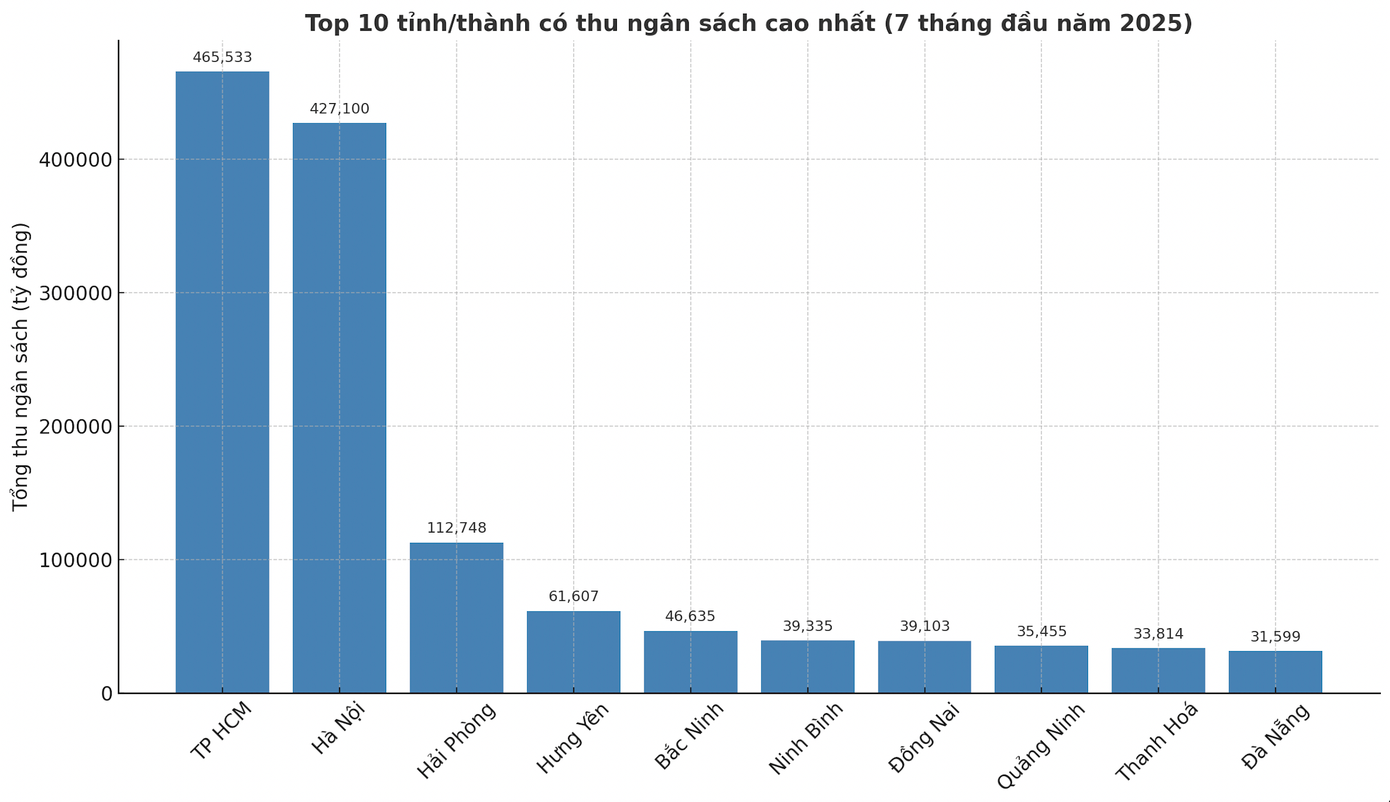
Top 10 provinces and cities with the highest budget revenue in the first seven months (Source: Provincial/City Statistics and Finance Departments)
Among the leading localities, Ho Chi Minh City maintained its top position with a total budget revenue of VND 465 trillion, accounting for 66.8% of the plan and a 12.9% increase compared to the same period. Hanoi ranked second with VND 427 trillion, equivalent to 84.2% of the plan and a significant 40.8% rise.
Hai Phong came in third with a total revenue of VND 112.7 thousand billion, achieving 76.4% of the plan and a 27% increase. Hung Yen recorded VND 61,607 billion, surpassing the annual plan by 111% in just seven months.
The following positions were held by Bac Ninh, with VND 46,635 billion, meeting 82% of the plan; Ninh Binh with VND 39,335 billion, equivalent to 76%; and Dong Nai with VND 39,103 billion, mostly derived from domestic revenue. The remaining provinces in the top 10 included Quang Ninh (VND 35,455 billion), Thanh Hoa (VND 33,814 billion), and Da Nang (VND 31,599 billion).
After seven months, Ho Chi Minh City reclaimed its top position in the country in terms of budget revenue, following the merger with Ba Ria-Vung Tau and Binh Duong, both of which were among the leading provinces in budget revenue. In 2024, these two localities ranked fourth and fifth in the country, respectively, in terms of budget revenue. Ba Ria-Vung Tau’s total budget revenue reached VND 77,089 billion, while Binh Duong collected VND 71,234 billion.
Following the reorganization, Ho Chi Minh City’s total budget revenue plan for 2025 is nearly VND 700 trillion, accounting for 32.7% of the country’s total revenue plan. This includes the former Ho Chi Minh City’s contribution of VND 520.4 trillion (74.6%), Ba Ria-Vung Tau’s contribution of VND 102.6 trillion (14.7%), and Binh Duong’s contribution of VND 74,320 billion (10.7%).
While Ho Chi Minh City benefits from the merger with two leading budget revenue localities, Hanoi temporarily takes the second position after seven months. However, according to experts, Hanoi still has the potential to maintain its role as an economic leader alongside Ho Chi Minh City.
What are the sources of revenue?
To nurture and expand budget revenue sources while ensuring economic growth, economic expert Ngo Tri Long emphasized the need for localities, especially Hanoi and Ho Chi Minh City as economic drivers, to synchronously implement strategic solutions in the coming period.

Ho Chi Minh City leads the nation in budget revenue for the first seven months.
According to Mr. Long, nurturing revenue sources starts with supporting businesses. When businesses thrive and production and trade flourish, budget revenue becomes more sustainable. Hanoi and Ho Chi Minh City are actively promoting tax and fee exemptions and reductions, as well as expediting tax refunds to ease the burden on businesses. These policies not only help businesses overcome challenges and create more jobs but also stimulate consumption, tourism, and stable revenue for the state budget.
Additionally, the expert noted the remarkable increase in budget revenue from land use fees, which reached VND 243,644 billion in the first half of the year, equivalent to 96% of the annual plan and a more than 2.6-fold increase compared to the same period in 2024. Hanoi collected over VND 86,700 billion from land and housing, while Ho Chi Minh City collected more than VND 65,000 billion.
Mr. Long attributed this surge to the Land Law 2024 and its guiding decrees, which resolved bottlenecks and enabled many projects to complete land-use fee valuation and payment. Moreover, the new land price framework issued by localities also significantly increased land prices in some areas compared to the previous period.
Economist Nguyen Tri Hieu emphasized that while high land prices boost budget revenue, they also present two concerns. Firstly, if prices rise too rapidly, the real estate market may become volatile, and people may struggle to afford housing. Secondly, and equally important, these revenue sources must be utilized effectively for public policies.
The Capital’s First Double-Decker Train: A New Experience with Limited Daily Trips and Onboard Entertainment
“Vietnam Railways introduces a new era of travel with the launch of the ‘5-door carriage’ train and a state-of-the-art biometric ticketing system. Step aboard and experience a seamless journey like no other.
The new train boasts a modern design, featuring five spacious doors per carriage, transforming the travel experience with enhanced convenience and comfort. Passengers can now board and alight with ease, ensuring a swift and efficient journey.
Coupled with the advanced biometric ticketing system, Vietnam Railways offers a secure and personalized travel experience. This cutting-edge technology revolutionizes the way tickets are managed, providing a seamless and contactless journey from booking to boarding.
With this innovative step forward, Vietnam Railways continues to raise the bar in transportation, offering a truly modern and sophisticated travel experience.”
The Grand Opening of Nhon Trach Bridge: What Routes are Available for Commuters?
On the morning of August 20th, the Nhon Trach Bridge officially opened, providing a new connection between Ho Chi Minh City and Dong Nai. This milestone achievement is expected to alleviate traffic congestion and significantly reduce travel time for commuters.



